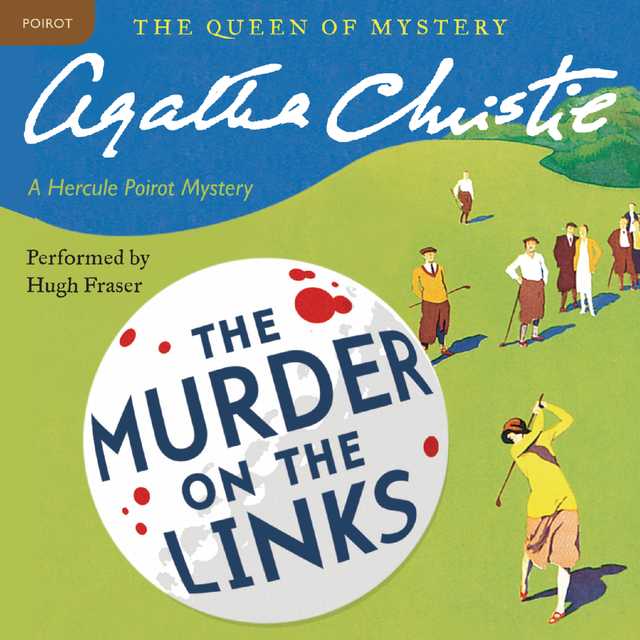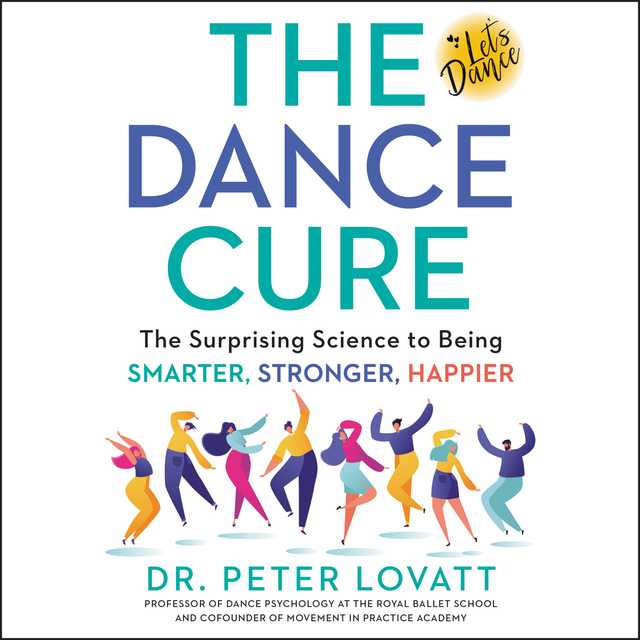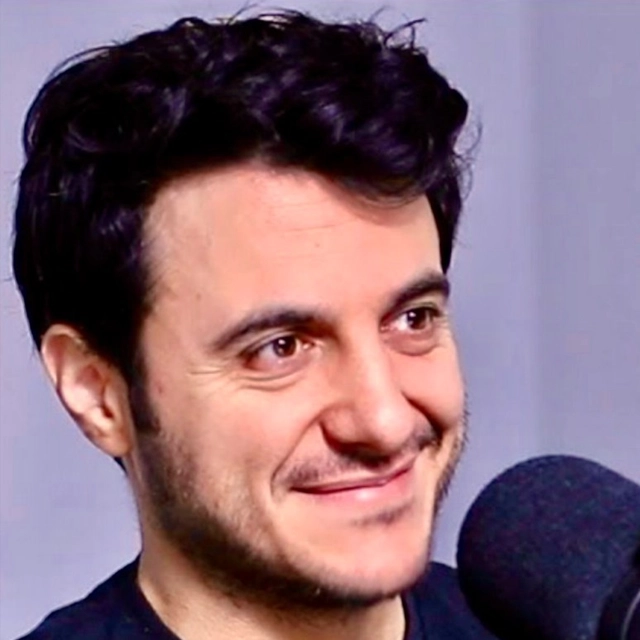Murder on the Links Audiobook Summary
In Agatha Christie’s class mystery Murder on the Links, Hercule Poirot attempts to unravel the grisly conundrum of not one, but two dead bodies discovered on a French golf course.
An urgent cry for help brings Hercule Poirot to France. But he arrives too late to save his client, whose brutally stabbed body now lies face down in a shallow grave on a golf course.
But why is the dead man wearing an overcoat that is too big for him? And for whom was the impassioned love letter in the pocket? Before Poirot can answer these questions, the case is turned upside down by the discovery of a second, identically murdered corpse….
Other Top Audiobooks
Murder on the Links Audiobook Narrator
Hugh Fraser is the narrator of Murder on the Links audiobook that was written by Agatha Christie
Agatha Christie is the most widely published author of all time, outsold only by the Bible and Shakespeare. Her books have sold more than a billion copies in English and another billion in a hundred foreign languages. She died in 1976, after a prolific career spanning six decades.
About the Author(s) of Murder on the Links
Agatha Christie is the author of Murder on the Links
More From the Same
- Publisher : HarperAudio
- Abraham
- American Gods [TV Tie-In]
- Dead Ringer
- House of Sand and Fog
- Prey
Murder on the Links Full Details
| Narrator | Hugh Fraser |
| Length | 6 hours 0 minutes |
| Author | Agatha Christie |
| Category | |
| Publisher | HarperAudio |
| Release date | July 03, 2012 |
| ISBN | 9780062231529 |
Additional info
The publisher of the Murder on the Links is HarperAudio. The imprint is HarperAudio. It is supplied by HarperAudio. The ISBN-13 is 9780062231529.
Global Availability
This book is only available in the United States.
Goodreads Reviews
Jaline
May 10, 2019
Side Note: In August last year, I reached a personal milestone of 1,000 books read so far in this decade with the first of Agatha Christie’s Hercule Poirot series, The Mysterious Affair at Styles. With this second novel in the Hercule Poirot series, I have reached another personal milestone: 1,000 eBook reads on my eReader. One thing I can already see: since I bought my first eReader, I have definitely been reading more books than ever before – and that is definitely a good thing! (PS – my reading decades are tracked differently than most people track decades. I start with the ‘zero year’ and end with the ‘nine year’ – in other words, for my reading purposes, this decade started for me in January 2010 and ends at the end of December this year, 2019.) Captain Arthur Hastings chronicles this second novel in Agatha Christie’s Hercule Poirot series, just as he did in the first one. Poirot receives an urgent letter from a very wealthy man who says he is in fear of his life and desperately requires Poirot’s assistance. When Poirot and Hastings arrive, they are met with the news that the man was murdered in the ‘bunkair’ (as Poirot calls it) that was being built on a golf course under construction.Of course, in real golf, landing one’s golf ball in a bunker filled with sand and a bank along one edge is definitely not a good thing as they are notoriously difficult to chip one’s way out of. In this case, landing in the ‘bunkair’ due to a stab in the back is, of course, far worse.The plot in this novel rivals any that can be found in modern mystery writing. In fact, it not only rivals them, but in the majority of cases supersedes them substantially. It has been many years since I read some of Agatha Christie’s novels, and to be honest – I don’t think I would recognize the ones I previously read after so many years have passed of life, experience, and reading.Ms Christie’s characters may not be as strong, yet that is out of necessity. In each book, several characters have to be admitted to set the stage, disassemble it, re-set it, and so forth. It wouldn’t even be responsible of her as a writer to dramatize the characters beyond the extent that she does because I can’t imagine anything worse as a reader than to find a character I was really attached to turn into a criminal.However, we have Hercule Poirot. He may be tiny with big flowing mustaches and an obsession with adjusting the position of various objects that look out of alignment to him. Still, if he is not physically the ultimate hero to warm up to, his brain and how it works to solve the unsolvable is a huge attraction. And, we have Captain Arthur Hastings – young, dashing, and not nearly as swift to hone in on clues that his friend sees in seconds, he is still endearing in his efforts to keep up to the electrically-charged Poirot.Although I have not been able to insert into my reading schedule as many Agatha Christie novels as I would like to, there are definitely more upcoming during the latter part of this year. I am so much looking forward to my further adventures with the incorrigible and daunting team of Poirot and Hastings.
Ahmad
October 16, 2021
The Murder on the Links (Hercule Poirot, #2), Agatha Christie The Murder on the Links is a work of detective fiction by Agatha Christie, first published in the UK by The Bodley Head in May 1923, and in the US by Dodd, Mead & Co in the same year. It features Hercule Poirot and Arthur Hastings. The story takes place in northern France, giving Poirot a hostile competitor from the Paris Sûreté. Poirot's long memory for past or similar crimes proves useful in resolving the crimes. Hercule Poirot and Captain Hastings travel to Merlinville-sur-Mer, France, to meet with Paul Renauld, who has requested their help. Upon arriving at his home, the Villa Genevieve, local police greet them with news that he had been found dead that morning. Renauld had been stabbed in the back with a letter opener and left in a newly dug grave adjacent to a local golf course. His wife, Eloise Renauld, claims masked men broke into the villa at 2 am, tied her up, and took her husband away with them. Upon inspecting his body, Eloise collapses with grief at seeing her dead husband. Monsieur Giraud of the Sûreté leads the police investigation, and resents Poirot's involvement; Monsieur Hautet, the Examining Magistrate, is more open to sharing key information with him.عنوانهای چاپ شده در ایران: «قتل در زمین گلف»؛ «چمن خونین»؛ نویسنده: آگاتا کریستی؛ تاریخ نخستین خوانش: سال 1996میلادیعنوان: قتل در زمین گلف؛ نویسنده: آگاتا کریستی؛ مترجم: صغری ظهیری؛ تهران، میلاد، 1375؛ در 280ص؛ موضوع داستانهای نویسندگان بریتانیا - سده 20معنوان: قتل در زمین گلف؛ نویسنده: آگاتا کریستی؛ مترجم: مهرداد فتوره چی؛ تهران، جامعه، سال1375؛ در263ص؛ شابک9649006508؛عنوان: قتل در زمین گلف؛ نویسنده: آگاتا کریستی؛ مترجم: محمدعلی ایزدی؛ تهران، هرمس، کارآگاه، سال1388؛ در269ص؛ چاپ سوم، سال1392؛ شابک9789643634735؛عنوان: چمن خونین؛ نویسنده: آگاتا کریستی؛ مترجم: بهرام افراسیابی؛ تهران، مهرفام، نگاه، سال1389؛ در351ص؛ شابک9789649915470؛از آن موقعی که تو به من اعتماد کردی، من مرتبا به تو دروغ گفته ام؛ از متن کتابداستان این کتاب درباره ی ماجرایی است که «هرکول پوآرو» و «آرتور هستینگز» برای حل آن اقدام میکنند؛ در بخشی از این داستان، «آرتور هستینگز» همسر آینده ی خود یعنی «دالسی دویین» را، برای نخستین بار میبیند؛ داستان درباره قتل «موسیو رونالد» یکی از ثروتمندان «فرانسوی-کانادایی» ست، که جسدش در «بانک ایر» پیدا شده، او پیش از مرگش از «پوآرو» درخواست میکند، تا برای گفتگو در باره مسئله ای به «فرانسه» بیاید، پس از آن پلیس به پسر وی، که روز قتل با او دعوا کرده، مظنون میشود، و وی را دستگیر میکند، و در عین حال جسد فرد دیگری که ولگرد، ولی با لباسهای اعیانی است پیدا میشود...؛تاریخ بهنگام رسانی 10/08/1399هجری خورشیدی؛ 24/07/1400هجری خورشیدی؛ ا. شربیانی
Anne
November 20, 2022
I thought this was going to be about a golfer getting murdered.SPOILER ALERT: It was not.This was actually one of the wilder rides that I've been on with Hasting and Hercule. Every time I thought we had the murderer in custody, there was another switcheroo and we were back to Poirot chuckling under his breath and making everyone feel like an ass.Honestly, all you need to know about the plot is that it is completely bananas.But I totally dug the entire thing and thought it was a really refreshing story.Also, Hastings meets his very own Cinderella in this one. So if for no other reason than that, this one is an important one for those of us who are into Poirot lore.Recommended.Read by Charles Armstrong.
Julie
September 04, 2019
The Murder on the Links by Agatha Christie is a 1923 publication. Poirot has been frantically summoned to France by Monsieur Paul Renauld. Unfortunately, upon arrival, Hastings and Poirot are informed they have arrived too late and Renauld is dead… murdered as it so happens. Pitted against a younger and equally confident detective, Poirot is determined to meet his competition head on, utilizing his advantage of experience to solve the crime.This is the second Poirot by Agatha Christie and is one I have not read. Christie obviously found inspiration with Holmes and Watson, and one can debate whether this is a homage or a parody, but either way, she did a masterful job with this twisty, complex whodunit.I thoroughly enjoyed this classic mystery. I was never able to sit back, smugly confident that I had it all figured out. Christie was always at least two steps ahead of me. This is a stunning guessing game, narrated by Hastings, who provides his own unique observations along with his amusing commentary. Despite its age, and our current desensitization and demand for more shock and awe, I think this story stands on its own merits quite well. (With the exception of a bit of cringe-worthy insta-love) Christie is very clever, and it is obvious she put much thought into the plot, dotting the I’s and crossing the t’s. I was enthralled by her skill, and it is easy to see why she had such an enormous impact on the mystery genre. As pure mysteries are few and far between right now, I’m looking to read more classics. Having read Poirot mysteries off and on over the years, I know this one might not rank up there with some of the later installments, but this a smart and impressive gem!!4 stars
Simona
February 03, 2022
This plot is so complicated that I lost count of the number of times I lost count of its coups de théâtre. So layered! At one point, when a first (second? Told you I lost count) solution is offered, Poirot says, “This is not a crime well ordered and regular, such as a detective delights in. [...] ah, indeed, what order or method is there in that?”and I pretty much agreed with him. I was appalled. I disliked that solution so much, it made so little sense, that I thought it was the worst of all of Christie's novel I had ever read -and believe me, they are quite a lot. But then another solution came up, et voilà! I fell in love again. On top of that, I fell in love again in spite of all the sentimentalism the whole story is seasoned with. It may be tough to deal with at times, but I promise it will be worth the effort: “Take it from Papa Poirot!”PS I love him, but Hastings needs to disappear now. I find it so much easier to enjoy the novels where he is simply a minor character rather than the sole narrator.
daph pink ♡
January 08, 2022
Agatha Christie Book Reading ChallengeBOOK 35 :- OCT 20213.5 STARS
Lawyer
January 10, 2017
The Murder on the Links: A RetrospectiveIt was almost fifty years ago I read my first Agatha Christie novel. I was fourteen. I bought it at a middle school book fair. It was an Hercule Poirot mystery, The Big Four, a Dell paperback that sold for $.45. A bargain at the price. My First Poirot Through the coming years I read all of the Poirot novels. A few of the Miss Marples. Miss Marple just didn't grab me as Poirot and his friend Hastings did. As far as Tommy and Tuppence, well, I could do without them. The stand alones did nothing for me, other than And Then There Were None, The Mousetrap: A Play, and The Witness for the Prosecution and Other Stories which I considered an absolute masterpiece. Christie first wrote this as a short story, then the play, which became the blockbuster movie In retrospect, I probably didn't get all of the nuances of Dame Christie's work at age fourteen. Poirot's use of French phrases drove me to distraction. Of course, in 1965, there was no thing as Google Translate. However, I doggedly followed Poirot's cases, understanding more and more as I grew a little older and a little wiser.I had a pleasant surprise yesterday. Walking into a chain bookstore in Papamoa, New Zealand, I perused the bargain table and found a stack of Harper Collins 125th Anniversary Reprints of Hercule Poirot novels. Among them was The Murder on the Links published in 2015. With a price tag of Three for 25 NZ$, the lure to recapture a bit of my youth was too much to refuse. I bought all the early Poirots, leaving those written after the 1950s on the table.Within a day I devoured The Murder on the Links. In reading it so many years after I had first encountered it I found I still possessed the same love for the curious little man originally driven from his native Belgium by the Great War. And, once again I was drawn to Poirot's relationship with Hastings, Captain Hastings, invalided out of the war after the Battle of the Somme.Theirs is a friendship based on true regard for one another. There is also a paternalistic attitude Poirot has toward the much younger Hastings. It is not unusual that in the course of events Poirot tells Hastings to "Trust Papa Poirot." You gotta love it.Then there is the undeniable comparison of Poirot and Hastings to Holmes and Watson although Poirot and Holmes are detectives of decidedly different natures. Alas, Hastings possesses Watson's same inability to ever stay even with his companion when the game is afoot.Hastings describes Poirot: An extraordinary little man. Height five feet four inches, egg shaped head carried a little to one side, eyes that shone green when he was excited, stiff military moustache. Air of dignity immense! He was neat and dandified in appearance. For neatness of any kind he had a passion. Of Poirot's method, Hastings tell us this: He had a certain disdain for tangible evidence such as footprints and cigarette ash, and would maintain, by themselves, they would never enable a detective to solve a crime. Then he would tap his egg-shaped head with absurd complacency, and remark with great satisfaction: 'The true work, it is done from within. The little grey cells--remember always the little grey cells, mon ami. Originally published in 1923, this is the second appearance of Poirot in novel form. Dame Christie introduced him in The Mysterious Affair at Styles published in 1920 to great success. In this novel Poirot is summoned to France at the urgent request of Monsieur P.T. Reynaud. However, Poirot and Hastings arrive too late, finding that Reynaud has been murdered, stabbed in the back and turned into a shallow grave on golfing links under construction. Mrs. Reynaud tells of having been bound hand and foot by two heavily bearded foreigners wearing masks.The case is further complicated when a second body is found on the Reynaud estate. Another man has been murdered apparently with the same weapon which killed Reynaud.Poirot must match wits with Chief Inspector Giraud of Le Surete, an investigator of the new breed, for whom only physical evidence holds the solution to any crime. Giraud, arrogant and rude, calls Poirot an "Old Fossil," provoking the more traditional investigator to wager he will solve the case before Giraud.The stakes are high. An innocent man could be sentenced to death by the guilliotine. It is only a very small spoiler to say that Poirot wins his bet with Giraud. The innocent man is saved.The Murder on the Links illustrates the rules of constructing a mystery which Dame Christie followed. The Detection Club was founded in 1930, Christie being a founding member. The club's ethics were created for the purpose of giving the reader a reasonable chance of solving the mystery. Those ethics include the following:1. The criminal must be mentioned in the early part of the story, but must not be anyone whose thoughts the reader has been allowed to know.2. All supernatural or preternatural agencies are ruled out as a matter of course.3. Not more than one secret room or passage is allowable.4. No hitherto undiscovered poisons may be used, nor any appliance which will need a long scientific explanation at the end.5. No accident must ever help the detective, nor must he ever have an unaccountable intuition which proves to be right.6. The detective himself must not commit the crime.7. The detective is bound to declare any clues which he may discover.8. The "sidekick" of the detective, the Watson, must not conceal from the reader any thoughts which pass through his mind: his intelligence must be slightly, but very slightly, below that of the average reader.9. Twin brothers, and doubles generally, must not appear unless we have been duly prepared for them.10. No Chinaman must appear in any story. (Yes, at one time, the inscrutable Chinaman was a handy villain in poorly written mystery stories.)Agatha Christie served as President of the Detection Club from 1957-1976. She never wavered from the rules. "The little grey cells. Remember always the little grey cells, mon ami."Dame Agatha Christie during the early cases of Hercule PoirotSo with many more years of living behind me than when I first held an Hercule Poirot in my trembling hands, I have returned to the Golden Age of Mystery Writing. It's good to be back. I've obtained the newly revised copy of The Mysterious Affair at Styles. Ah, the first Poirot. It's been a very long time. Indeed.
¸¸.•*¨*•♫ Mrs. Buttercup
February 29, 2020
“The little grey cells, my friend, the little grey cells! They told me.” I am an old Poirot fan but I read Agatha Christie's books such a long time ago that I can't even remember which ones I read and which ones I didn't. So I decided to re-read the whole series from the first one, and I am enjoying this so much! I loved this second novel, much more than the first. The mystery is intriguing and Poirot is telling us of his little gray cells for the first time! What a pivotal moment ahah. Such a fun read!
Bionic Jean
November 05, 2022
The Murder on the Links is an early detective mystery by Agatha Christie. Originally, it had been published as a four-part monthly serial in a magazine between December 1922 and March 1923, under the title of “The Girl with the Anxious Eyes”, before it was issued in book form by The Bodley Head in May 1923. It is the second novel to feature everyone’s favourite Belgian detective, Hercule Poirot:“Height, five feet four inches, egg-shaped head carried a little to one side, eyes that shone green when he was excited, stiff military moustache, air of dignity immense!”The Murder on the Links could be thought of as “the French one”, as it takes place in northern France. Additionally, the style is “high-flown and fanciful”, as Agatha Christie readily admitted, owing something to “The Phantom of the Opera” author, Gaston Leroux, and even, apparently, the 17th century tragedian, Jean Racine. She had based the book very closely upon a real-life French murder case, and one critic noted that some of the plot twists seemed to have been inspired by Sir Arthur Conan Doyle’s short story featuring Sherlock Holmes , “The Adventure of the Abbey Grange”. Hercule Poirot’s regular side-kick and amanuensis, Captain Arthur Hastings, is in place, and the setting leaves the field wide open to potentially antagonistic French professionals from the Paris Sûreté.Writing about a talented amateur detective who reasons things out, accompanied by his rather more pedestrian side-kick, are certainly reminiscent of Sir Arthur Conan Doyle’s Sherlock Holmes mysteries. Contemporary reviewers at the time noted this, and compared the two favourably. Hastings of course plays the same role as Watson in the Sherlock Holmes novels, and Monsieur Giraud, the investigating officer in this novel and a detective of the Paris Sûreté takes the part of Inspector Lestrade.“Two people rarely see the same thing.”To add a little spice to the action, Monsieur Giraud is arrogant, and resents Poirot’s involvement in the investigation, treating him with contempt as his rival. To ameliorate this slightly, we have Monsieur Hautet, who is the examining magistrate, and assistant to Monsieur Giraud. He respects Poirot because of his reputation, and is therefore more helpful. These two are like amplifications of Inspector Lestrade, who has different attitudes towards Holmes at different times, in the Sherlock Holmes novels. Later on we are to meet Lucien Bex, the commissary of police for Merlinville, and Monsieur Marchaud, a police sergeant in his force. Agatha Christie seems to revel in introducing new characters, to complicate matters even further, and this is just one example. None of these police officers is particularly pertinent to the plot, but the interchanges and frictions between Girauld and Poirot makes for most entertaining reading. We also enjoy the frustration experienced by Hastings, who occasionally bursts out with something like:“I neither see nor comprehend. You make all these confounded mysteries, and it’s useless asking you to explain. You always like keeping something up your sleeve to the last minute.”The novel begins with Captain Hastings narrating in an amusing fashion about a train journey in which he meets a young girl. He is clearly attracted to her, yet has ambivalent feelings, as she seems to exemplify all the aspects of modern young women of which he disapproves:“Now I am old-fashioned. A woman, I consider, should be womanly. I have no patience with the modern neurotic girl who jazzes from morning to night, smokes like a chimney, and uses language which would make a billingsgate fishwoman blush!”She leaves without divulging her name, fancifully calling herself “Cinderella”.The “case proper” begins with a message received by Hercule Poirot from a Paul Renauld, who has requested his help urgently. We are treated to an analysis of this letter by Poirot, who considers it deviously written, with a suspect addition, designed to ensure that Poirot would come. Sure enough, he is intrigued, and he and Captain Hastings travel to Paul Renauld’s home, the Villa Genevieve, in Merlinville-sur-Mer.But when they arrive, the local police have beaten them to it. (view spoiler)[ Poirot is aghast to learn that Paul Renauld has been found dead that morning: stabbed in the back with a letter opener and left in a newly dug grave adjacent to a local golf course.His wife, Eloise Renauld, is grief-stricken but self-contained. She tells a story of masked men breaking into the villa at 2 am. She shows them the marks on her wrists where they tied her up, and says they took her husband away with them. Yet later, when she is asked to identify the body, Eloise is clearly overwhelmed afresh, and collapses with genuine grief at seeing her dead husband, which causes Poirot to ponder. (hide spoiler)]We meet Monsieur Giraud of the Sûreté, a confident young man who is leading the police investigation, and watch his pompous efforts to upstage Poirot. Whenever Poirot picks up small details, such as piece of lead piping found near the body, Monsieur Giraud delights in mocking him. Poirot remains calm, although Hastings is most indignant at the way he is being treated. Monsieur Hautet, the examining magistrate, is less resentful, and more inclined to welcome Poirot’s experience, and even to share important information with him.(view spoiler)[ Poirot notes several facts about the case, including an unknown person who visited the day before, whom Renauld had urged to leave immediately. Also, interestingly, Renauld’s immediate neighbour, Madame Daubreuil, had placed 200,000 francs into her bank account over recent weeks. (hide spoiler)]In between the entertaining descriptions of Poirot by Hastings, we are introduced to various people connected with the family. The son, Jack Renauld, is not present, as he had been sent away on a trip by his father, (view spoiler)[possibly after an argument. This leads to him being mistakenly suspected of the murder by Giraud. (hide spoiler)] Jack has an interesting history, which may or may not be significant. He had been born in South America, lived both in that country and in France, and has a complicated romantic life.Paul Renauld’s secretary, Gabriel Stonor, seems keen to be helpful to both the police and Poirot. He had been absent in England at the time of the murder, and suggests his own theory. Because his employer’s past is a complete mystery, prior to his time in South America, Stoner suggests that blackmail may be at the heart of it. Certainly South America seems to keep cropping up in this story.Doctor Durand is the local doctor and police surgeon in Merlinville. There are several servants: the elderly Françoise Arrichet, who was present at the Renauld’s house during the crime, and Léonie and Denise Oulard, two young maids who are sisters, and had also been there. In addition there is the gardener Auguste, who was not present.Other key players are two neighbours, Madame Daubreuil, and her daughter. Hastings is taken immediately with the attractive daughter, Marthe Daubreuil:“By Jove, Poirot,’ I exclaimed, ‘did you see that young goddess?’ ”, yet all Poirot see is that she has “anxious eyes”.(view spoiler)[ Madame Daubreuil is eventually revealed to be a Madame Jeanne Beroldy, who had been involved in plotting the murder of her husband 22 years previously. She had been blackmailing the victim, Paul Renauld, whose identity was also revealed to be an alias. He was Georges Conneau, who, with her connivance, had killed Jeanne Beroldy’s husband, but also escaped justice when caught. Marthe Daubreuil wants to marry Jack, for his money, and this is the motivation for her crime. (hide spoiler)]There are also two theatrical sisters, called Dubeen, who are acrobats, and their theatrical agent, Joseph Aarons. Bella Duveen is much talked about in the novel. (view spoiler)[Jack is in love with Bella, despite having split from her, and now being involved with Marthe Daubreuil. Her twin is Dulcie Duveen, whom Captain Hasting is in love with, and only knows as “Cinderella”. (hide spoiler)]Captain Hastings is teased periodically by Poirot who observes that he seems to fall in love with every young woman he sees. Poirot promises him that “Papa Poirot” will find Hastings a suitable wife. We learn through Hastings’s narration, that this, unsurprisingly, makes Captain Arthur Hastings disinclined to share confidences with Poirot. He attempts to conceal facts about his encounter with Cinderella which he considers irrelevant, but which actually prove to be material to the case. Of course, to our delight, Poirot discovers them anyway. (view spoiler)[ Hastings has unexpectedly met “Cinderella”, once again. She is clearly able to wrap Hastings round her little finger, as she asks him if she may view the scene of the grisly murder. When she pretends to become faint, Hastings gallantly goes to fetch a glass of water, whereupon she then mysteriously absconds with the murder weapon. (hide spoiler)]Meanwhile, Poirot has travelled to Paris to research (view spoiler)[ the Beroldy case. On his return, he is shocked to learn that the body of an unknown man has been found, stabbed through the heart with the murder weapon. Oddly, it becomes evident that the victim, who has the hands of a tramp, died from an epileptic fit, before Renauld’s murder, and had been stabbed after death. (hide spoiler)]We know full well that Poirot and Giraud will disagree about this latest development, and are not disappointed. It is also amusing to watch as Hastings switches between his loyalty to Poirot, and his worry that Poirot is actually making a fool of himself. We, the readers, of course have total faith in the diminutive Belgian detective.Jack has come across as a very suspicious character. (view spoiler)[He admitted to police that he had argued with his father over wishing to marry Madame Daubreuil’s daughter Marthe, whom his parents found unsuitable. Giraud therefore arrests Jack, and sends him to prison, on the basis that he wanted his father’s money.Poirot however, points out that Renauld had changed his will two weeks before his murder, disinheriting Jack. Soon afterwards, Bella Duveen confesses to the murder, hoping to free him. Jack is immediately released from prison. The truth is that both are still in love with each other. When each came across the body on the night of the murder, each had assumed that the other was the killer. However Poirot reveals neither did, as the real killer had been Marthe Daubreuil. (hide spoiler)]During a couple of expositions, which use a whole chapter, Poirot relates the history he has discovered to Hastings, and explains his theory:“Man is an unoriginal animal. Unoriginal within the law in his daily respectable life, equally unoriginal outside the law. If a man commits a crime, any other crime he commits will resemble it closely.”(view spoiler)[Paul Renauld, or Georges Conneau, had changed his name in order to start a new life. He had made a fortune in South America, married, and had a son. He then returned to France to settle down with his new family.By a terrible coincidence, he found that his immediate neighbour would be his erstwhile partner in crime, Madame Beroldy. Just as he had, she too had changed her identity, and was now known as Madame Daubreuil.Madame Daubreuil had made the most of the situation, and proceeded to blackmail Paul Renauld. To make the situation even worse, his son Jack apparently became attracted to her manipulative daughter, Marthe. An opportunity to escape Madame Daubreuil’s clutches had presented itself when a tramp died in the grounds of his home.Paul Renauld had planned to fake his own death. With his wife Eloise’s help, he would stage his own kidnapping at night. He would use the pipe to disfigure the tramp’s body, and then bury both beside the golf course, before fleeing the area by train. To make absolutely sure, anyone who might recognise that the body was not his, (for instance his secretary or his son) was sent away. Then Eloise would be safe in falsely identifying the body as his.Poirot had suspected that Eloise was complicit in the scheme right at the start. He had noticed that she only gave her true reaction to her husband’s death when she saw his body.However, Marthe had overheard Paul and Eloise Renauld discussing the plan, and realised that this would put paid to her own plan to marry Jack for his money. She therefore followed Paul Renauld and stabbed him after he dug the grave for the tramp’s body, before he had retrieved it.Having worked all this out, Poirot asks Eloise to openly disinherit Jack, in order to reveal Marthe as the killer. (hide spoiler)] He does not take anyone into his confidence: not even Hastings, who remains nonplussed by this development — as do we. Poirot had deliberately engineered events to make the killer try something desperate, thereby showing their hand.Sure enough, in an exciting climax, (view spoiler)[Marthe attempts to kill Eloise that night. Poirot had suspected that this might happen, but does not realise that her room has been changed, when Jack leaves her alone in the villa. By a sheer stroke of luck, Cinderella has insisted on going along with Poirot and Hastings, and in an astonishing feat of acrobatic skill and daring, she breaks into the upstairs room from outside, and saves Eloise. The evil Marthe dies in the tussle.At the end, Cinderella reveals herself to Hastings as Dulcie Duveen, Bella’s twin sister, and it is heavily implied that the two will marry. Jack Renauld and his mother, Eloise, plan to go to South America, accompanied by the happy couple. And Marthe’s mother, Madame Daubreuil, neatly manages to disappear yet again. (hide spoiler)]“I had learned, with Poirot, that the less dangerous he looked, the more dangerous he was.”This plot is fiendishly difficult to fathom, and the murderer probably impossible to deduce, although the clues are all there. The story draws us in, with all the bantering one-upmanship between the various detectives, and the appealing subplot of Captain Hastings’s true romance. We feel like giving a cheer when Poirot’s theories are revealed to be the correct ones, and the arrogant sneering Girauld is firmly put in his place:“‘You speak of my manner to you being insulting. Well, once or twice, your manner has annoyed me.’‘I am enchanted to hear it,’ said Poirot.”There is an excellent television dramatisation of this novel starring David Suchet, who has recorded all the Poirot stories. Hugh Fraser also regularly stars as Captain Arthur Hastings. Several of the details of the plot are different, but perhaps the most odd change is that the location has been switched to Deauville. If anything, the plot is just a little too complex, but this golden age mystery deserves four stars for its entertainment value. Hercule Poirot was still a new character to the reading public, and one reviewer said he was: “a pleasant contrast to most of his lurid competitors; and one even suspects a touch of satire in him.” This is still what springs to mind for the modern reader, who has the whole oeuvre of Poirot books to choose from. The plots of all Agatha Christie’s novels are ingenious, complex and satisfying, but in addition, these early novels are far more amusing and droll than any she wrote later, when her writing style seemed to become more mechanical.Moreover, by now we are well and truly hooked into reading other stories chronicled by Captain Arthur Hastings, about his friend Hercule Poirot, the diminutive detective who solves case after case purely by using: “the little grey cells, my friend, the little grey cells! They told me.”“Arrange your ideas. Be methodical. Be orderly. There is the secret of success.”
Heidi
March 05, 2022
How fun to spend a few hours with my first favorite detective and his charming, if not slightly befuddled, sidekick. How I managed to miss this one is beyond me, but I really enjoyed reading this early Poirot. Certainly Ms Christie fine tuned her characters as the series continued, but I was not surprised that Hercule’s mustaches were an early sartorial priority for our “egg-shaped’ friend. Slightly melodramatic, Christie threw a lot of tropes in here including some slightly complicated, double crossing lovers. Some added, over the top fun included a younger Hastings in love. They just don’t make them like this anymore… now to see if PBS produced this one with David Suchet as the Belgian. 😎
Emma
December 03, 2017
Really enjoyed this one! Had no idea about who was the culprit.
Anissa
May 28, 2021
Arthur Hastings! My word he was a lot to take here. I usually love him but Arthur made this one hard. Poirot is his very wonderful self but Hastings and his narration are all over the place. His penchant for having retrograde ideas about women caused a lot more trouble than they were worth and he hampered the investigation. I wanted him to leave which is terrible because he was relating the tale! And yet somehow, Christie makes this a book I didn't want to toss across the room even though I desperately wanted someone, anyone, to throw Hastings in a bunker on the links and leave him there! It was a well-done mystery (obvi) and was just what I was looking for. My next Christie mystery is going to have to feature Ariadne Oliver though. I'll loop back with Arthur later.
Vikas
August 04, 2019
The second book by Christie to feature Poirot we get to know more about him and Hastings. It actually builds up the imagery of Poirot which then the master sleuth carries forward seamlessly in succeeding novels. Interesting plot with lots of twists and turns, finally revealing the murderer least suspected by all. A roller coaster of a novel.
Most Popular Audiobooks
Frequently asked questions
Listening to audiobooks not only easy, it is also very convenient. You can listen to audiobooks on almost every device. From your laptop to your smart phone or even a smart speaker like Apple HomePod or even Alexa. Here’s how you can get started listening to audiobooks.
- 1. Download your favorite audiobook app such as Speechify.
- 2. Sign up for an account.
- 3. Browse the library for the best audiobooks and select the first one for free
- 4. Download the audiobook file to your device
- 5. Open the Speechify audiobook app and select the audiobook you want to listen to.
- 6. Adjust the playback speed and other settings to your preference.
- 7. Press play and enjoy!
While you can listen to the bestsellers on almost any device, and preferences may vary, generally smart phones are offer the most convenience factor. You could be working out, grocery shopping, or even watching your dog in the dog park on a Saturday morning.
However, most audiobook apps work across multiple devices so you can pick up that riveting new Stephen King book you started at the dog park, back on your laptop when you get back home.
Speechify is one of the best apps for audiobooks. The pricing structure is the most competitive in the market and the app is easy to use. It features the best sellers and award winning authors. Listen to your favorite books or discover new ones and listen to real voice actors read to you. Getting started is easy, the first book is free.
Research showcasing the brain health benefits of reading on a regular basis is wide-ranging and undeniable. However, research comparing the benefits of reading vs listening is much more sparse. According to professor of psychology and author Dr. Kristen Willeumier, though, there is good reason to believe that the reading experience provided by audiobooks offers many of the same brain benefits as reading a physical book.
Audiobooks are recordings of books that are read aloud by a professional voice actor. The recordings are typically available for purchase and download in digital formats such as MP3, WMA, or AAC. They can also be streamed from online services like Speechify, Audible, AppleBooks, or Spotify.
You simply download the app onto your smart phone, create your account, and in Speechify, you can choose your first book, from our vast library of best-sellers and classics, to read for free.
Audiobooks, like real books can add up over time. Here’s where you can listen to audiobooks for free. Speechify let’s you read your first best seller for free. Apart from that, we have a vast selection of free audiobooks that you can enjoy. Get the same rich experience no matter if the book was free or not.
It depends. Yes, there are free audiobooks and paid audiobooks. Speechify offers a blend of both!
It varies. The easiest way depends on a few things. The app and service you use, which device, and platform. Speechify is the easiest way to listen to audiobooks. Downloading the app is quick. It is not a large app and does not eat up space on your iPhone or Android device.
Listening to audiobooks on your smart phone, with Speechify, is the easiest way to listen to audiobooks.






























